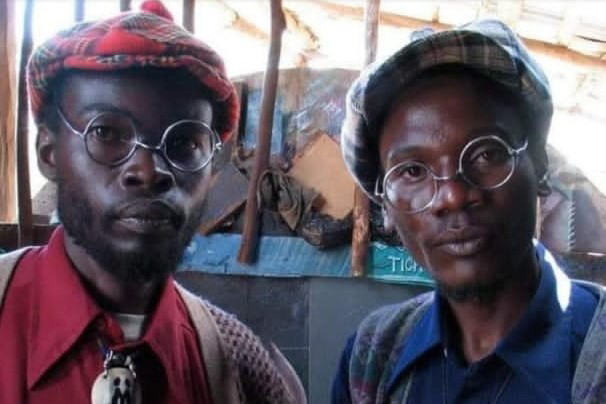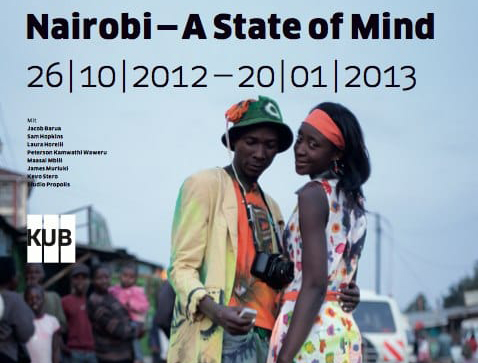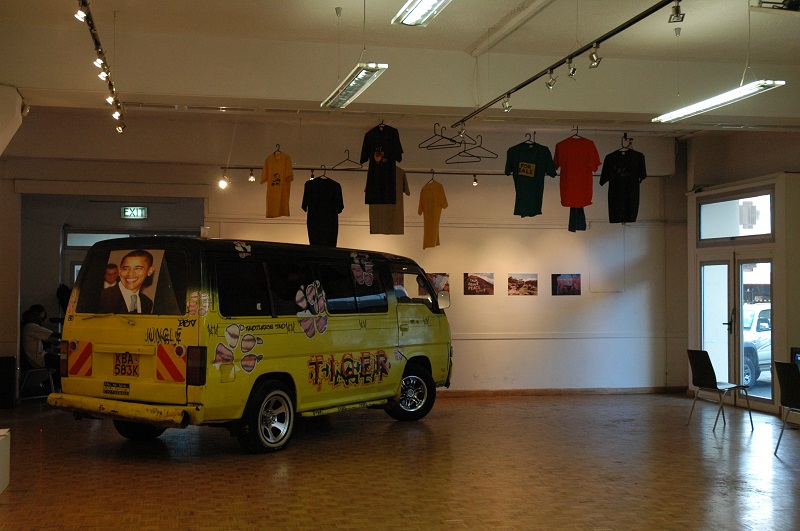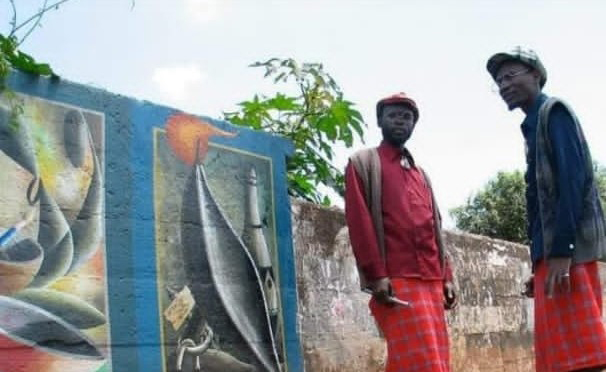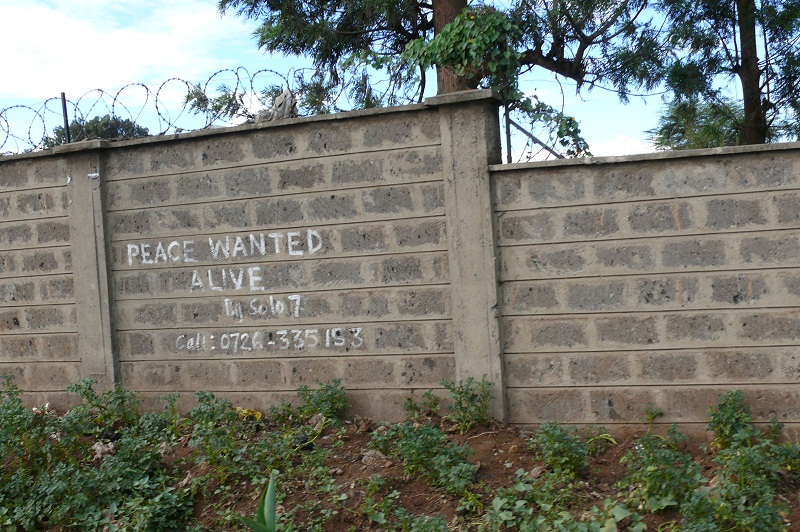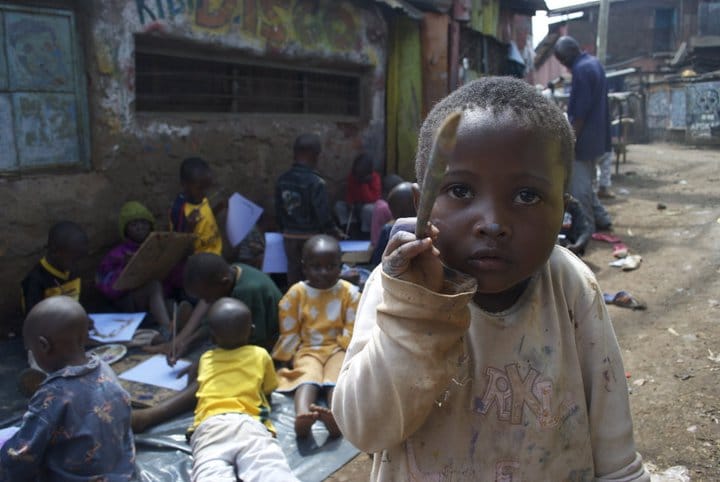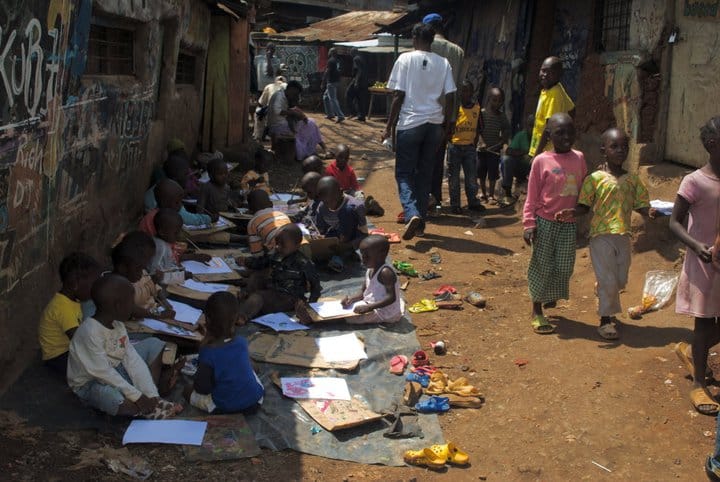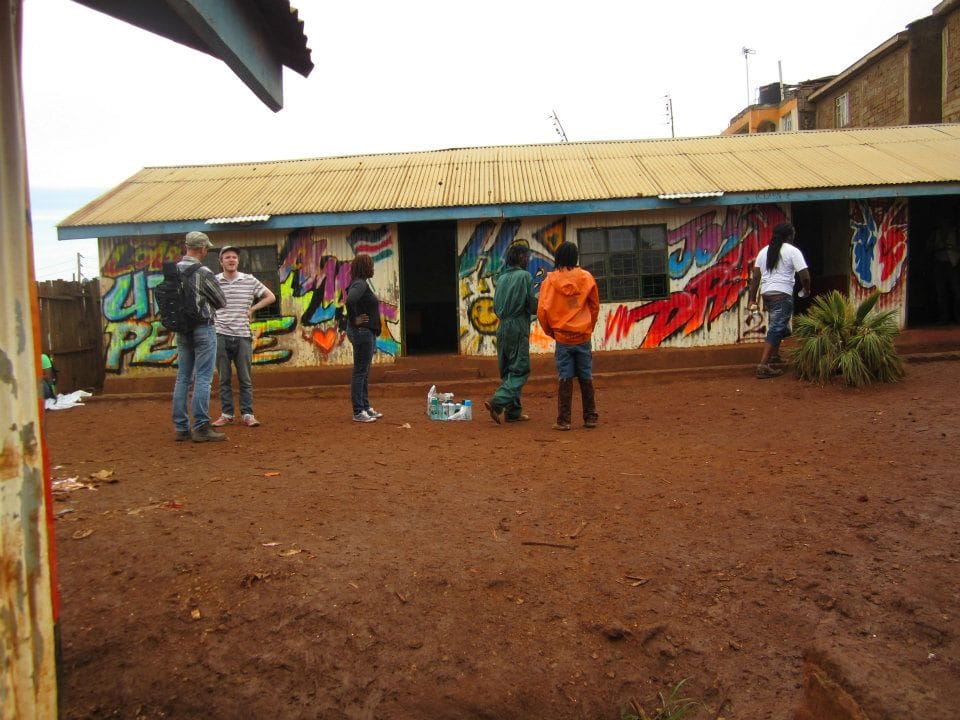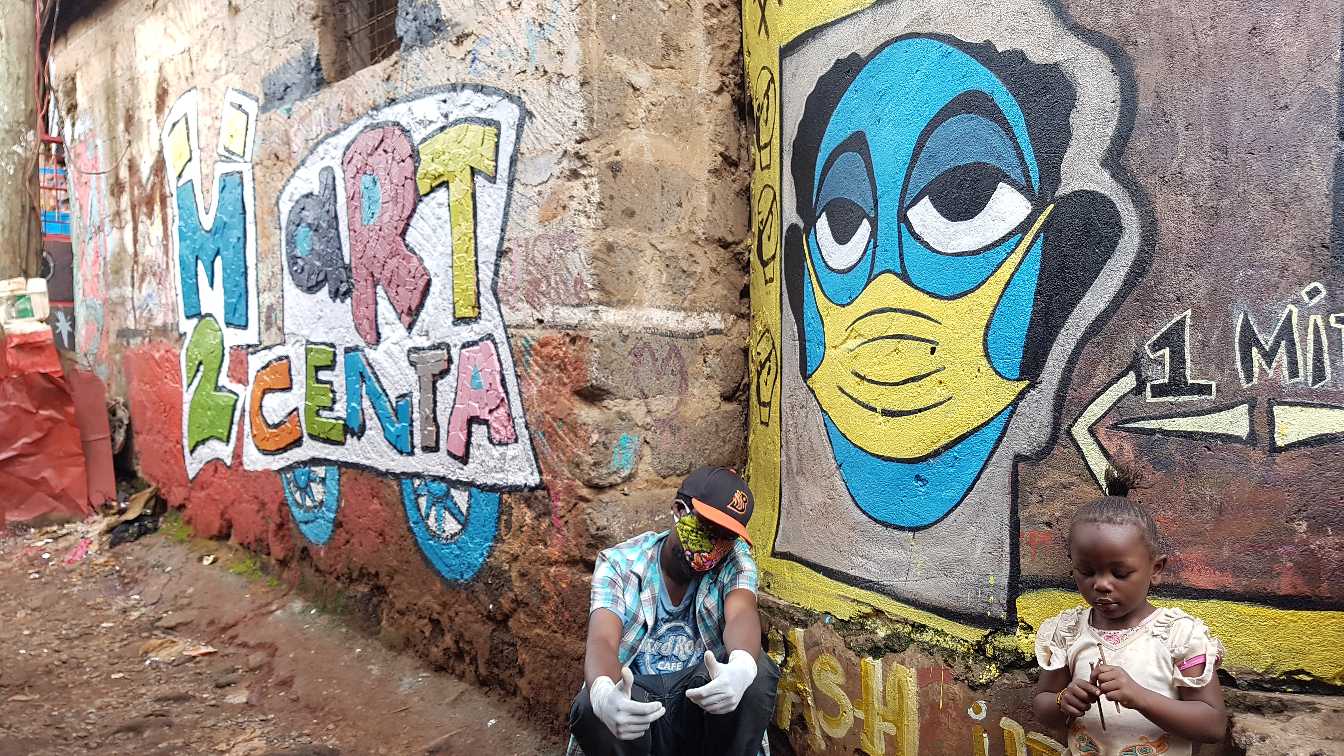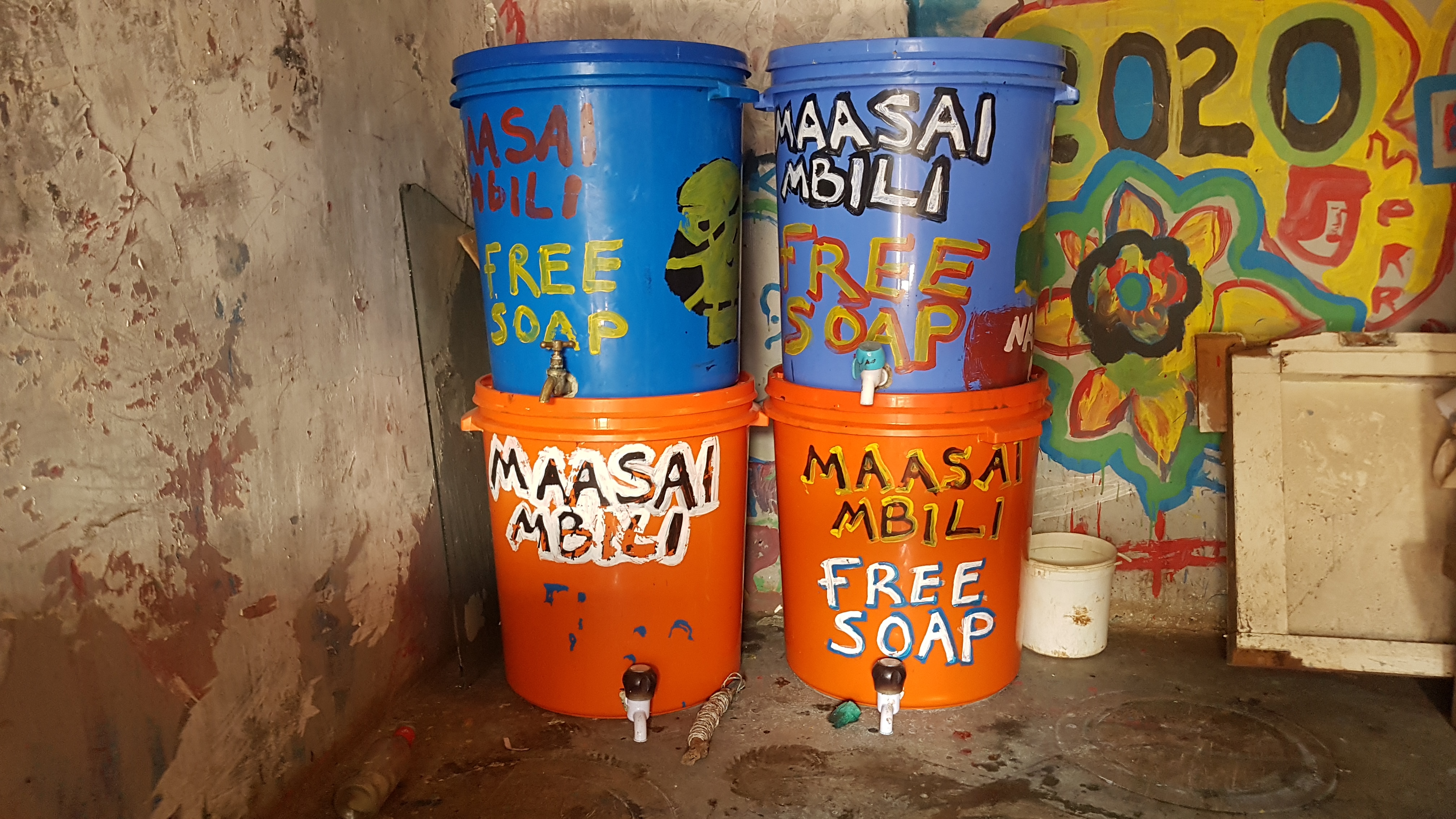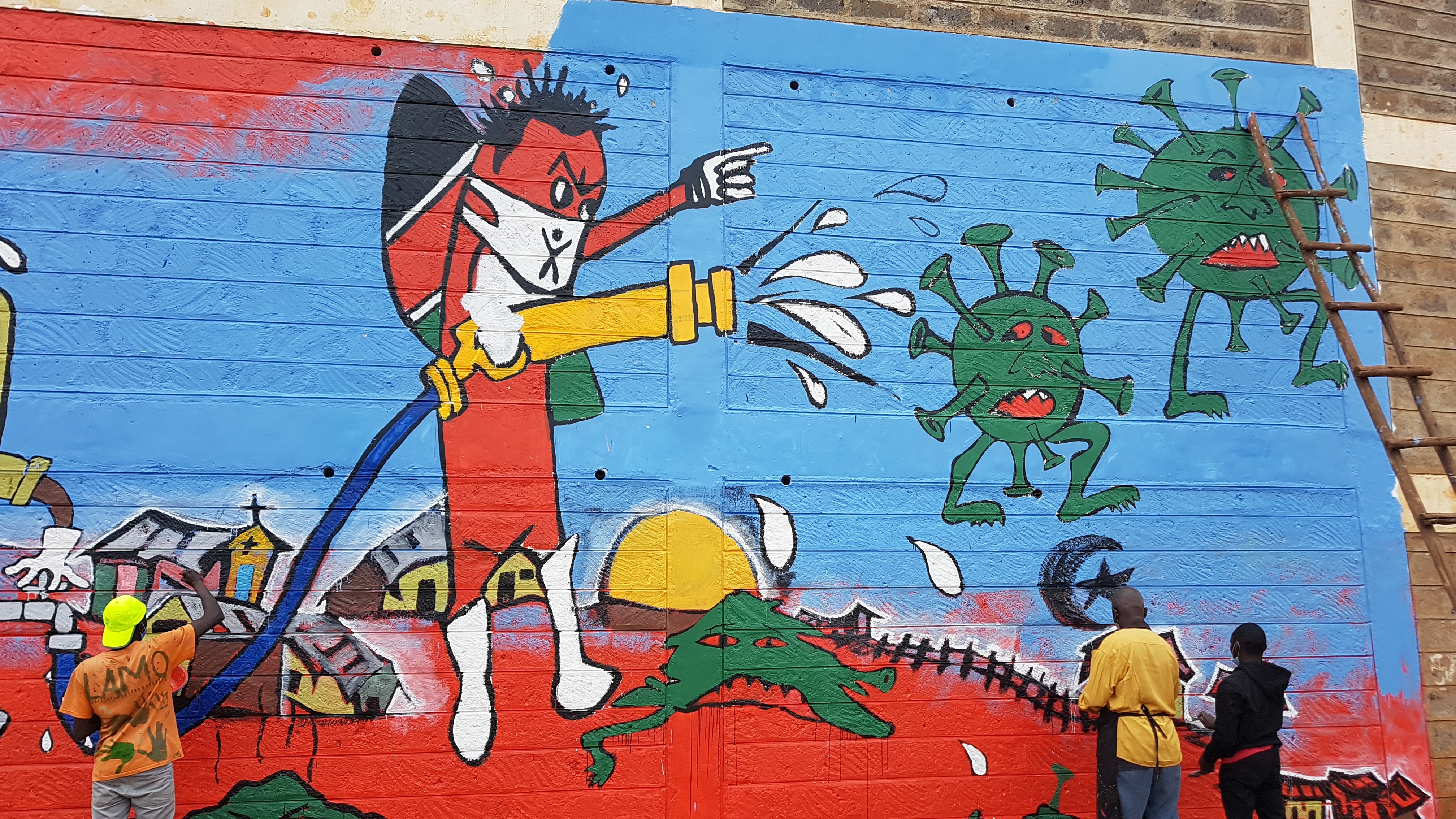Maasai Mbili was founded in 2001 by Kenyan street artists Otieno Gomba and Otieno Kota. They had a small space were they practiced their art from and also create signs for shops in order to earn some money. 2003 Maasai Mbili acquired their permanent home in Nairobi’s, Kibera [chocolate city] and this became the M2ART-CENTRE. Gomba and Kota would dress as Maasai [though neither of them was] to attract customers, hence the name Maasai Mbili. Over the years M2ART-CENTRE has been welcoming other creatives to join the collective.
M2 Artists are currently doing an artist residency at Seyna Art Gallery in Uganda and also conducting an installation workshop at Nagenda International Academy of Art and Design. They exhibit there the end of June. I recently had the chance to interact with some of the members and this is what they had to say.
Victoria: What are the goals and objectives of the collective?
Gomba: We wanted a voice for artists up around our area and also wanted to show the positivity of our place through art.
Kevin: It started as a small art business but later they moved to a bigger space were they natured artists, to communicate with the community through art and to sell some works.
V: What are your biggest influences?
Gomba: Meeting people, having good shows and then being part of the community projects around us.
Maasai Mbili takes art to schools
Kevin: In Kenya art was scrapped off school, so there was no art in schools anymore .So starting Maasai Mbili was a good idea too because creativity plays a big part in schools. We are mainly influenced by the community.
V: How does your work comment on the current social and political issues in Kenya?
Gomba: We are in the middle of the pandemic so most of my works are based on the pandemic and how to get through it.
V: How has COVID affected you as a group?
Gomba: we have been receiving less visitors and most of our shows were cancelled.
V: How has the collective developed your career?
Gomba: My street art has been pushed to the gallery and we have had exhibitions almost all over the world which has given us exposure and funds.
Kevin: First of all, they gave the basic knowledge in art and almost everything I know. They introduced me to the gallery and now I know how the gallery works. I have met a lot of people and my work goes beyond painting to performance and installation art.
Vincent: It has been a big exposure for me I have got to learn from different people
Joakim: I have been introduced to the new art world.
V: How do you market and price your work as a collective?
We market our works using the internet, exhibitions and events that we create
Maasai Mbili shows art can be a career
V: As a group of artists, what are the achievements and challenges you have encountered so far?
Gomba: We have been able to convince the community that art is another career and it’s a way of expression not craziness and growing up with different artists and seeing them improve from one step to another.
One of our biggest challenges; at first people didn’t take art as a career and they looked at us as like crazy people who didn’t know what they are doing but am happy we were able to change that.
written by Victoria Nabulime
NYANZIZZA NNYO
Maasai Mbili
Senya Gallery
30 June
live-streamed on Seyna Art Gallery FB page and Nagenda International Academy of Art and Design YouTube
Victoria Nabulime lives in Kampala, Uganda and is currently on our Remote Cultural Journalism Internship Program. She and her father, Charles Kamya, were guest artists in the Goethe-Zentrum Kampala UGCS Virtual Gallery Tour which featured parents and children in the creative fields. The other guests were PKRD47 local participant Noah Maxeimer and his mom, Maren Maxeimer. You can watch it on UGCS youtube. PILOTENKUECHE started our cooperation with UGCS last February. Each episode features other artists and cooperation partners. This time we cooperated with Senya Art Gallery.

